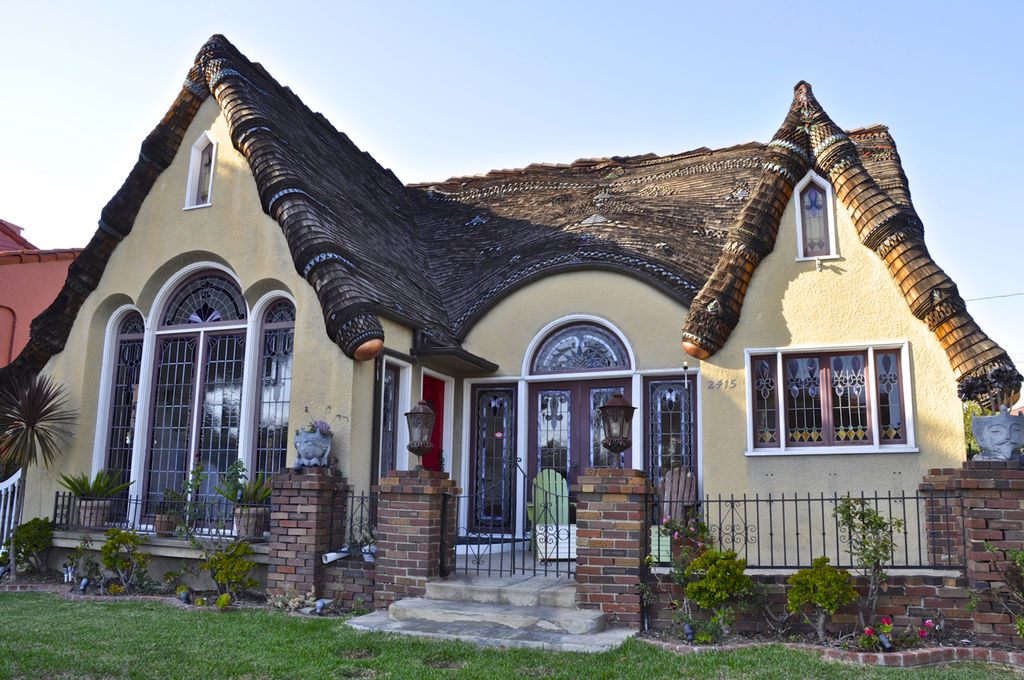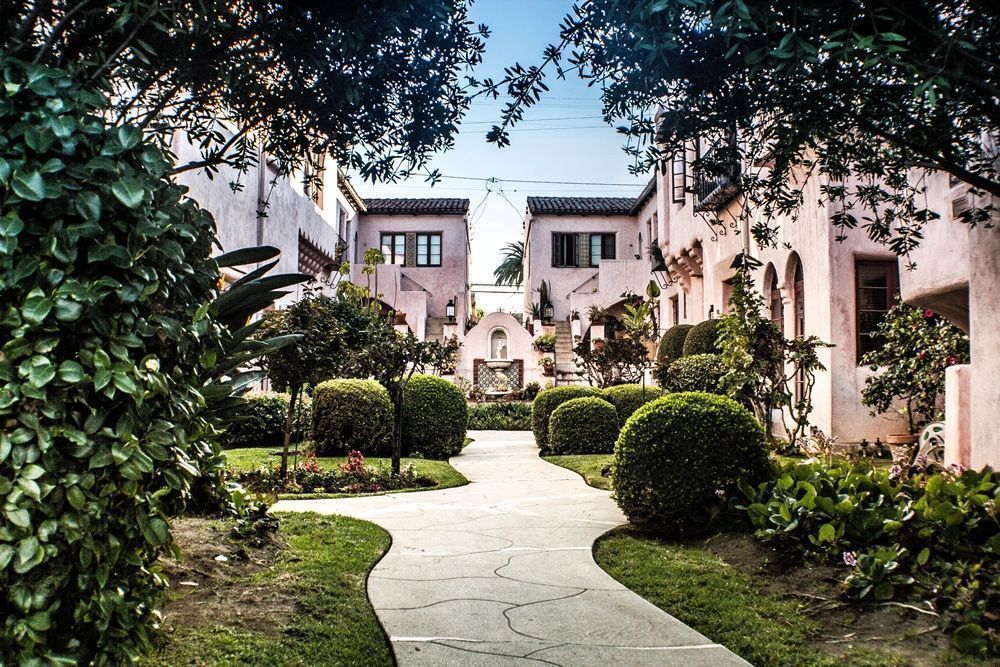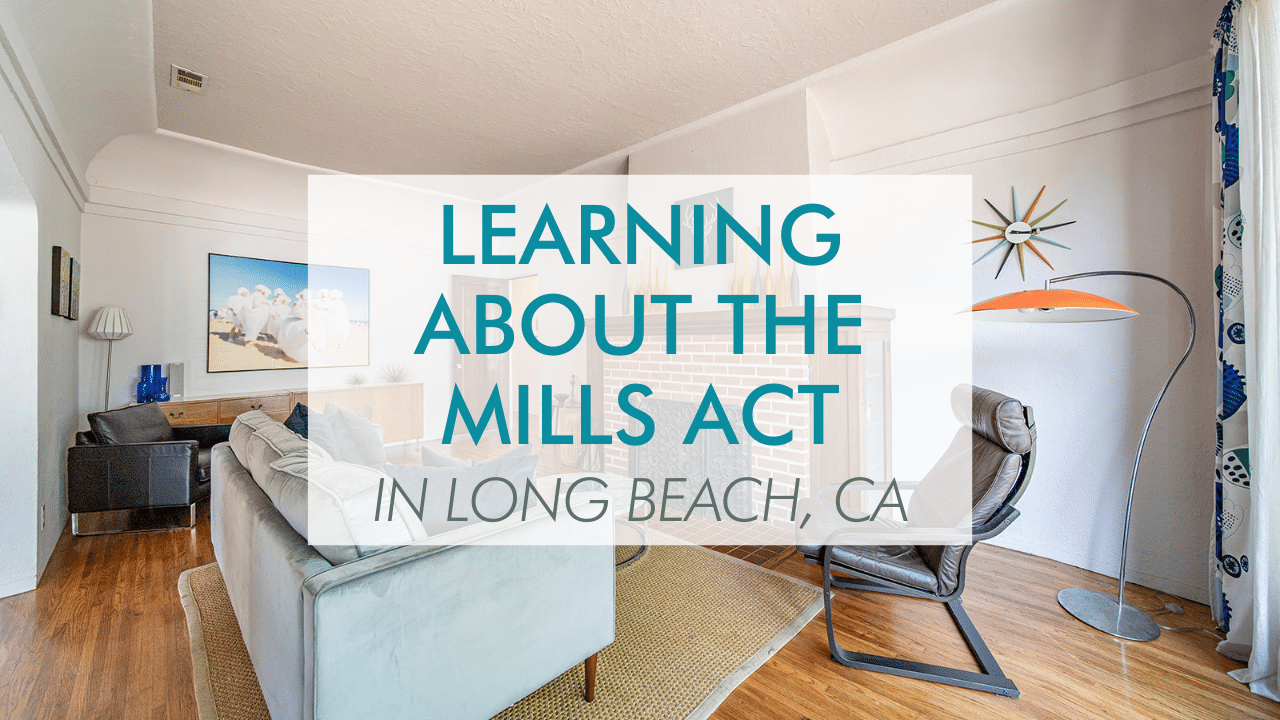In 2020, The City of Long Beach Development Services Department put a pause on accepting applicants for the Mills Act Property Tax Abatement Program (Mills Act) due to a lack of resources. However, we’re pleased to share that the application process has re-opened! In addition to filling out the application, there are two workshops that are recommended for your application to be considered. Since the program is highly competitive, in-person attendance/participation will help you get a leg up on the competition. If you are unable to attend the workshops you can still move forward with the application process. Click here to learn more about the application process and the mandatory workshops.
There are many benefits to owning a historic home in Long Beach. One of the biggest potential financial benefits is the opportunity to obtain a tax break through the Long Beach Mills Act. The Mills Act program offers property tax breaks to encourage the owners of historic buildings to restore and maintain the architectural integrity of their residential or commercial structures. For many homeowners, a home’s historic architecture and character is the initial draw. However, the added tax break from the Mills Act is a welcome bonus!
Mills Act Interview
In 2021, The Shannon Jones Team listed a home that qualifies for the Mills Act. 2111 Eucalyptus Avenue is a Tudor home in the Wrigley Historic District. Shannon interviewed the current homeowner about the Long Beach Mills Act, discussing the process of applying as well as the benefits of the program.
Background on the Mills Act
The California legislature enacted the Mills Act in 1972 with the objective of designating and protecting historic properties. The program was first launched in Long Beach in 1993. Since then, it has designated and approved tax incentives for more than 60 single-family residences and duplexes. Additionally, the Mills Act can apply to multi-family and commercial buildings.
The program went dormant in 2006 amid budget cuts at city hall. However, it was restored years later because homeowners voiced their support for its return. In 2015, the Long Beach City Council approved revisions to the Mills Act Program. This created more opportunities for eligible historic property owners.
Maureen Neeley, a local reference librarian, owns a consulting firm called HouStories. Her firm helps historic homeowners research their house’s story. This information is critical when applying for the Mills Act. “People who move into neighborhoods or blocks that have Mills Act homes find it tends to stabilize the neighborhood, it inspires pride and it galvanizes the community,” Maureen said.

An example of one of the many unique homes in Long Beach’s Carroll Park Historic District.
How to Apply for the Mills Act
Properties must be designated City of Long Beach historic landmarks or contributing structures in Landmark Districts to get a Mills Act contract. Applicants who own properties not yet recognized as Historic Landmarks may submit a Landmark Application at the same time they turn in their Mills Act application. This year, applicants must attend two mandatory workshops in addition to submitting their online application.
Once approved, participating property owners sign an agreement with the city for a minimum of 10 years. Under the agreement, property owners agree to restore, maintain and protect their historic structures. In addition, this upkeep has to abide by certain standards and conditions. Afterward, Mills Act participants will get their property taxes reassessed by the County Assessor. Depending on how the assessment comes back, homeowners can expect a 30-50% reduction in property taxes.
Criteria
In Long Beach, the Mills Act program is overseen by the city’s Planning Department. Here are some of the criteria for getting the city of Long Beach to approve tax benefits for your historic home.
- Residential properties must have an assessed value of less than $1,055,700 for single-family residences. For duplexes, that number is $1,267,000 and for triplexes it’s $1,900,500. Historic multi-family buildings with four or more units are eligible regardless of their assessed value.
- Priority is given to unique or important historic structures in particularly poor condition. Or, ones in need of significant restoration.
- The city also prioritizes tax relief for improvements that are visible from the street. They also give special consideration to any projects that will correct critical structural deficiencies, reverse inappropriate alterations, or preserve historic features.
- Certain projects and additions are not eligible for tax benefits. These include solar panels, pools, built-in barbeques, and interior remodels that don’t restore or rehabilitate historic character.
Once a home qualifies for the Mills Act, it does have to abide by certain rules. However, even if a home is in a historic district, but isn’t a Mills Act home, there are certain rules there as well. CLICK HERE to learn about the requirements for exterior painting in a Long Beach Historic District.
Long Beach Historic Districts
Long Beach is home to 18 historic districts. If you’re not familiar with them, we created a helpful video guide discussing some of them.
Condo Buildings with Mills Act Status
Besides landmark buildings in the city’s historic districts, several multi-family buildings are eligible for the Mills Act as designated historic landmarks. Two examples are Rose Towers at 1728 E. 3rd Street and the Villa Riviera building at Ocean Boulevard and Alamitos Avenue. These properties have a different application process because they are governed by homeowners associations.
Want to learn about another historic condo building? CLICK HERE to learn about the Willmore building.

The quaint courtyard at Rose Towers in Alamitos Beach was featured in the movie “La La Land.”
Want to Learn More About Historic Homes?
Here at The Shannon Jones Team, we love historic homes. We have helped a number of clients buy and sell historic properties. If you are interested in buying a historic home, click here for a blog post about all the historic homes currently on the market. If you want to sell a historic home, we can help with that too! Simply fill out the form below or give us a call at 562.896.2456 to get started!



Leave a Reply